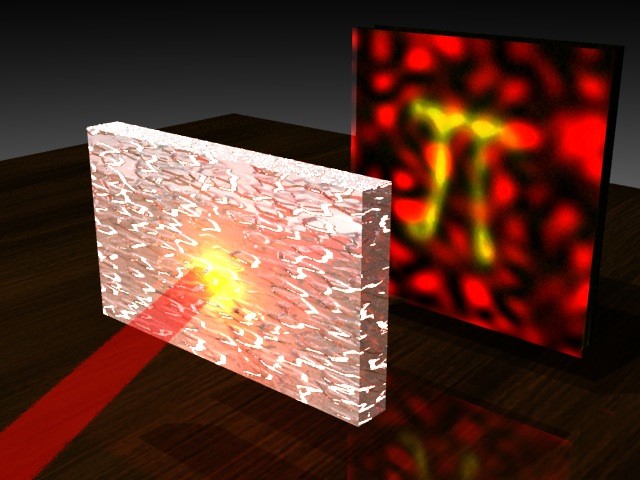
Fig. 1: Laser light that impinges on a strongly scattering screen is transmitted as a random speckled interference pattern. Speckle correlations can be used to focus light and retrieve the image of a hidden object.
Jaarprogramma 2018-2019 | Vorige lezing | Volgende lezing | Home
Dinsdag 5 maart 2019
Prof. dr. A.P. Mosk (Nanophotonics, Universiteit Utrecht)
Scattering is the key

Fig. 1: Laser light that impinges on a strongly scattering screen is transmitted as a random speckled interference pattern. Speckle correlations can be used to focus light and retrieve the image of a hidden object.
Random scattering of light, which takes place in paper, paint and biological tissue is an obstacle to imaging and focusing of light and thus hampers many applications. At the same time scattering is a phenomenon of basic physical interest as it allows the study of fascinating interference effects such as open transport channels. These are complex field patterns which propagate through strongly scattering materials without loss or backscattering. The open channels fit the nanostructure of the scattering medium like a lock and key, which enables high-security authentication and communication protocols.
Imaging through scattering media has been transformed by the use of computers to control the light and process the data. Computation allows us to extract image information from seemingly random speckle patterns (Fig. 1). Scattering “lenses” made of high-index materials allow computational wide-field speckle-illumination microscopy with a resolution approaching 100 nm, by the use of phase-retrieval algorithms. More advanced machine learning algorithms that process the scattered light patterns pave the way to new methods to recognize and classify objects that cannot be directly imaged.
Links:
Jaarprogramma 2018-2019 | Vorige lezing | Volgende lezing | Home